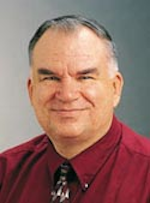The reversal the last few years of declines in US oil and gas reserves is happening because of economic factors, determined individual entrepreneurs, and technological innovation.
OGJ and the Washington Institute for Energy Research (IER) have done our best to point out the realities of the turnarounds in US oil and gas reserves and production.
Return of reserves growth
The US Energy Information Administration recently updated its oil and natural gas reserve numbers and found large increases through 2011, further dispelling the myth that the country could be running out of a scarce domestic energy supply.
The revised assessment includes a 15% rise in crude oil and lease condensate proved reserves from 2010 to 2011, putting these numbers at their highest level since 1985. Wet natural gas reserves and dry natural gas reserves both increased by 10% (OGJ Online, Aug. 2, 2013).
IER noted that higher reserve levels are good news as American onshore production is booming and rising faster than any time since the 1950s.
IER's findings
In its recent analysis, the institute examined the updated reserve numbers.
Crude oil and lease condensate proved reserves totaled 29.5 billion bbl, 3.8 billion bbl higher at yearend 2011 than at the end of 2010.
US wet natural gas proved reserves set a record at 348.8 tcf, and US dry natural gas proved reserves also set a record at 334 tcf.
Texas recorded the largest increase in proved oil reserves while North Dakota recorded the second-largest increase.
Those two states have performed so well because of the Bakken formation in North Dakota and mainly the Eagle Ford shale in Texas, but a Dallas independent said earlier this month that another West Texas play could eventually overshadow those.
OGJ's Unconventional Oil & Gas Report pointed out that Pioneer Natural Resources Co. has predicted that the multizone Spraberry Wolfcamp shale in West Texas could become the world's largest oil and gas play with 50 billion boe in recoverable resources and more zones to explore (OGJ Online, Aug. 12, 2013).
Rising costs
While reserve levels are higher, IER noted, accessibility to these reserves is costing more in production costs. For example, Chevron Corp. is developing three fields in the Gulf of Mexico at which drilling began in 2003 and from which production will begin next year at a cost of $16 billion.
Improved technology is reducing some costs, but the cost reductions are being countered by higher costs to lease equipment, buy supplies, and pay workers that are shrinking profits for all the major oil companies, IER found.
Production costs are particularly rising to get to the unconventional sources of oil in tight formations or in oil sands. The increased operating costs apply upward pressure on consumer prices, but even more threatening could be punitive changes the tax code proposed by US President Barack Obama that would eliminate standard tax deductions for oil and gas companies.
Entrepreneurs and technology
The genesis of research to unlock shale potential in the US can be traced as far back as the 1960s and 70s, although hydraulic fracturing technology has its roots several decades before that.
Entrepreneurs such as the late George P. Mitchell parlayed hydraulic fracturing and horizontal drilling to unlock commercial volumes of gas he suspected were in the Barnett shale from the dozens of wells he had drilled to other formations in the Fort Worth basin (OGJ Online, July 26, 2013).
Horizontal drilling in the US has roots that extend back to the 1960s, and more primitive efforts began even earlier than that.
The point is that, like most technologies, development of horizontal drilling and hydraulic fracturing don't happen overnight or stand still. They are subject to improvements and refinements that are still occurring.

Alan Petzet | Chief Editor Exploration
Alan Petzet is Chief Editor-Exploration of Oil & Gas Journal in Houston. He is editor of the Weekly E&D Newsletter, emailed to OGJ subscribers, and a regular contributor to the OGJ Online subscriber website.
Petzet joined OGJ in 1981 after 13 years in the Tulsa World business-oil department. He was named OGJ Exploration Editor in 1990. A native of Tulsa, he has a BA in journalism from the University of Tulsa.


